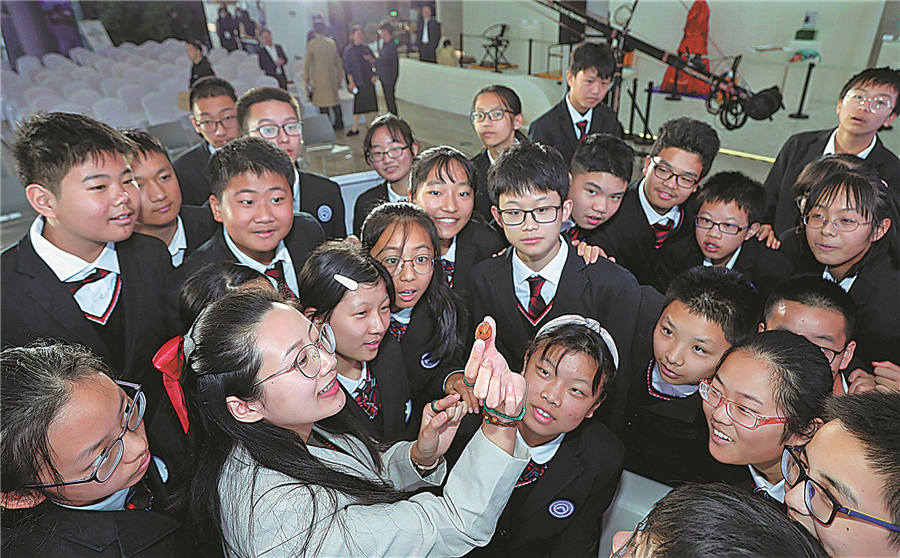

"I wanted to deliver the finished pieces faster, but mistakes always happened once I tried to speed things up, and I often cut my hands," she recalls.
Thanks to Xu's tutoring and her own continuous practice, Zhu gradually found the peace and patience required to produce her artistic creations.
The more she learned, the more she felt she made the right choice.
"Urban prosperity is appealing, but rural development and the inheritance of such craftsmanship needs more young vigor," she says, adding that she wants to tell stories about her hometown via fruit pit carving.
In 2014, Zhu opened her own studio, but she soon suffered setbacks.
Carving machines hit the market and pit artists suddenly found that the technique they had toiled to master and the skill they had built up over the years were no longer in such high demand.
"It was very tough, and I had to run classes to teach children to keep the studio running," she says.
But, as in the case with all art, the discerning eye could tell the difference between a machine carving and that of a trained hand.
"The chill passed quickly," Zhu says.
The experience woke Zhu up to the fact that a lack of young consumers is hampering the potential prosperity of her trade.
She then started to think about innovative ways to bring pit carving to young people's attention.
Zhu has since committed herself to popularizing the traditional art among young people and turning its inheritance into a prevailing taste.
The art training in her college years enabled her to integrate modern elements into the traditional carving and cater to the younger generation's aesthetic appreciation.
She has created cute Chinese zodiac animals and the majestic Suzhou gardens on fruit pits, as well as some with elements from popular sci-fi movies.
Those works have managed to appeal to young people, as shown by her regular visits to local primary and middle schools to promote the art.
"They show great interest in making their own fruit pit carvings afterward," Zhu says.